IntroductionThe purpose of this article is to present the main goal and objectives of updates as well as to walk you through the whole process of creating content updates and present to you the difficulties that come with it. Due to some questions and comments that we'd received, we first planned to write two separate articles: one about how updates are created, and another on inventing new lore. However, in the end, we decided that the two are inseparable and it's best to include them both in one comprehensive article. We hope that it will satisfy your curiosity and help you understand what challenges we face when creating new updates. We'd also like to note that this article is generic, i.e. it does not reference any one specific update, but regards all updates, past and future.
The Role of UpdatesLet us start by considering what role updates actually play in Tibiantis. Many times we witnessed heated discussions between players, where some would deny the point of any new updates and worry that they might ruin the game, while others would claim that new updates are absolutely necessary and should happen more frequently. In a sense, we appreciate both points of view and, therefore, work to find a proper balance. There are some people, though, who see a contradiction in the fact that on the one hand we're doing our best to imitate the original game and on the other we don't see a problem in adding new content. Allow us to shed some light on this.
Since the very beginning, Tibiantis was meant to be based on four pillars: (1) faithful reproduction of the original version 7.4 as thorough as none has ever managed, (2) complete eradication of any forms of cheating, (3) general stability and longevity, and finally (4) balanced and polished custom content in the flavor of 7.4–the main goal being to bring back the gameplay and feeling of old times as close to the original as possible. Of course, we realize that whatever we do, it will never be exactly the same, yet we aim to recreate that atmosphere as best we can. And for that, we had to first answer the question of what really contributed to the game's unique ambience. One of the significant factors (we'll discuss the rest some other time) were its secrets and legends, and the excitement that used to accompany exploration. While the recreation of 7.4 brings back the nostalgia and is what first attracts most players, the excitement of exploration is what it cannot incite, for today everyone knows the game all too well. Players these days have already memorized the whole map with great detail and, what's more, they very well know that there weren't any more quests left unsolved back then. It's obviously impossible to forget all that now, so if we want to feel at least a little bit like 20 years ago, we have to include that fourth pillar.

(And so it goes...)But as well as we understand those who seek the excitement that comes with new content, we also appreciate the concerns voiced by other players regarding updates. After all, the fact that you're so interested in such an old version of the original game (as are we) clearly shows that something must have gone wrong with its subsequent updates. At least that seems to be the general opinion. The constant changes in the mechanics, tinkering with balance, introducing new overtweaked hunting areas, and many other factors have all contributed to the deterioration of public opinion about the game. So the negative attitude towards change should not come as a surprise to anyone familiar with the original game. Many players simply don't want the game to be ruined again. They are also afraid that too many changes will make it into something different, stripping it of the nostalgia that had drawn them in. Considering all the hopes, expectations, concerns, and doubts–how can we harmonize all that?
First of all, as the starting point for Tibiantis we assumed the version 7.4, and thus it became our
game core. For the sake of consistency, we decided to disregard all subsequent versions, their content, sprites, etc. We also do not intend nor want to change the game itself, turn it upside-down, tamper with the mechanics, or introduce completely new systems. Our main objective is to maintain the status quo of the game core. We're not going to fix its flaws by force while creating new ones, for it wouldn't be the same game anymore. Tibiantis is to remain as close to the original 7.4 vibes as possible. The updates are mostly to complement the game with new quests and secrets to unravel (including so-called
epic quests) and to slightly break the routine by introducing new hunting spots that are balanced and adjusted to the current environment. They are meant to enrich the gameplay with this desired element of novelty and mystery, but not to change it. Therefore, new content cannot be in any way distinctly better than what's already there, though at the same time… it must still be good enough to win the interest of the players. On the one hand, it has to fit in with the original gameplay, and on the other, stay inconspicuous and unpretentious. This way, we are able to provide our players with a choice: let them embrace the new content or ignore it without the feeling of being left behind. This is also why there are no visible or far-reaching changes on the mainland. After all, the mainland is where most of the gameplay is based, as was years ago, and it should look just like we remember.
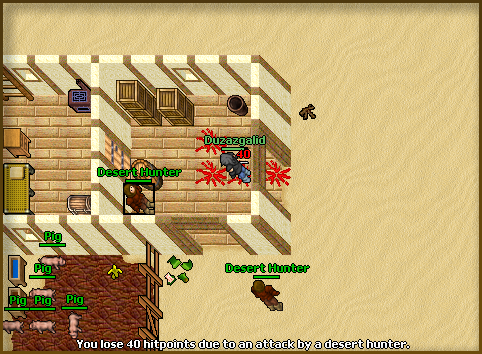
(In a sense, the locations of southern Darama, Ankrahmun especially, would be considered exceptions to the abovementioned rule, but we deemed this deviation necessary to reach our main goal of reviving the 7.4 gameplay. We discussed this in detail in , in the paragraph "Why is Ankrahmun a custom area?", to which we refer anyone interested in this topic.)
(The mainland, looking exactly like in the times of 7.4.)As you can see, this is all neither easy nor simple. New content should always be carefully thought through and polished in every detail. It's true that many players await the updates with excitement, but we cannot forget that we're still talking about a quite conservative community of old-timers here, who will not stand any mistakes in this regard. Therefore, introducing changes to the game is a bit like tightrope walking. We can't afford to fall, so we have to maintain the perfect balance at all times. And that requires meticulous preparation. We really understand why some people would like to see new content released more often, but it is one of our principles to choose quality over quantity and we cannot abandon that.
Ideas, Inspirations and the LoreWe now know the main goal and objectives of updates. But how can they be achieved, and how are updates actually created? The main theme and a general outline usually come very early. The thing about good ideas is that they are hard to come up with on demand while they often pop up when you least expect it. Which is why we always collect and jot down new ideas that can be used in the future and, in the meantime, we put them under discussion (often very heated). This way, when it's time to begin real work on the new update, we already know what it's going to include, more or less. In fact, we already have the concepts ready for two updates ahead. But this doesn't mean that from this point the process of creating updates and introducing them to the game is easy or simple. It is actually quite the opposite, and each stage involves many difficulties.
But where do we get our ideas in the first place? Since the new content is meant to maintain the original flavor of the game, we try to use the same sources of inspiration. It is no secret that the original creators drew heavily on Tolkien's world, various mythologies, and on other fantasy games. Should you take a closer look, you'll notice that the first lore was really a collage, various ideas from different sources made into one whole, combined seamlessly and with such originality and skill that there could be no talk of plagiarism. And the world that was thus created seems consistent and elaborate. We try, therefore, to follow in their footsteps when forming our ideas. For instance, the concept of Aruthang was partially inspired by the game Dwarf Fortress, which is characterized by random generation of unique and very detailed worlds every gameplay. Some of the events from Aruthang history are based on our actual adventures in that game! The gorlak and troglodytes are also derived from that title, though the appearance of the latter is based a bit more on the HoMM series. Kobolds, on the other hand, as well as underworms, originate from other games of the roguelike genre. But we always enrich every inspiration with our own ideas.
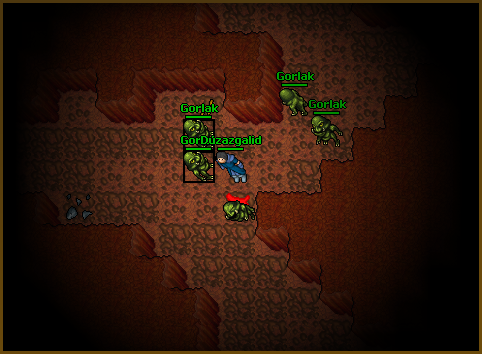
(Gorlak is the most frequently killed custom mob. In the last 4 years it was slain more than 2.5 million times.)Our greatest inspiration, however, will always be the original lore. After all, everything must fit together seamlessly to create one consistent whole. The original lore is where we look for unfinished stories and open plots. And these are abundant, be it some lesser-known side stories, which can be used to insert new content into the original, or the great unfinished legends begging to evolve into epic quests. In conversations, the fondest memories that many older players of the original game have are about their attempts and efforts to solve its secrets. They've been racking their brains over some of those secrets for years, their dreams filled with great treasuers, their imagination fired by the mystery. But it also became a source of a daunting disappointment, when it had turned out that the mystery was but a background to the main plot, not actual quests with real rewards. However, Tibiantis is full of possibilities! Each update introduces at least one new
epic quest–a quest that is extensive, complex, and full of secrets, with a unique and extraordinary reward awaiting the first daring explorer who completes it (and another smaller prize for all the other adventurers). But there'll be more about quests further on.
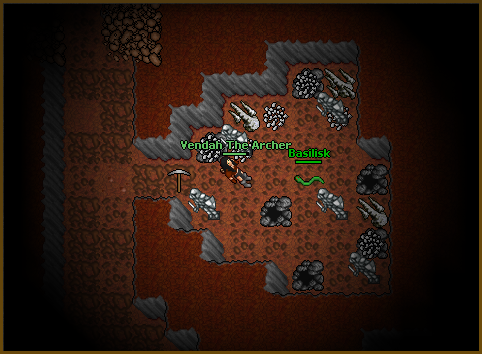
(Have we mentioned that Tibiantis is full of possibilities?)Besides the great legends and the main plot, the original lore intertwines with the new custom content also through numerous side stories and minute details. Let's conisder, for instance, the history of Ankrahmun. Our custom one largely corresponds to the original: both versions present Ankrahmun as the first human city, founded by Banor, who led the human race in the battle for creation, and both versions also make the city bear witness to the great war of the djinn, which resulted in the lush forest of Kha'labal becoming a barren wasteland. However, in Tibiantis, the city itself has also been destroyed, and the fallen cannot find peace because they're being affected by mysterious underground structures, remnants of an ancient long-forgotten race. The Tibiantis Ankrahmun, therefore, has never seen pharaohs. But the idea for that ancient race is one of the details that connect both lores and it hardly came from nowhere. It's been in the original lore all along, but the references are not explicit. Similarly, hints for the new custom quests, epic quests especially, are often scattered all over the existing lore, e.g. in the original books. These types of associations root the new content in the original lore and encourage the players to research the lore and explore the new-old tidbits (just like by faithfully recreating the 7.4 mechanics we meant for the players to rediscover their nuances). This is by no means an easy task, for–as you've read in the previous sections–the new content must stay aside for certain reasons. It is also worth mentioning, that Ankrahmun is an isolated case in which we had to change the original story and rid it of certain events (the reasons for this are explained in the previously ). In other cases, we always use existing plots without altering their original form in any way.
An interesting fact: the original authors also used pre-existing elements to create new content. For instance, one of such elements was the Orc Fortress and its reigning Orc King who looks like a slime. Both existed long before the djinn quest was introduced into the game. It wasn't until later, though, that the authors created a quest around the side story of how the Orc King released Malor from his lamp and wished for a fortress, and how Malor tricked him and turned him into a slime.
Another significant source of inspiration for us is the history of the original game itself. Not the lore, but the real actual history and the technical side of it. What we mean here is re-using motifs and themes that used to be in the game (pre-7.4 times) but have been removed for some reasons. We enjoy playing archaeologists and delving deep into such trivia so that we can later re-introduce them to the game. This way we get to add to the game something completely new yet not devoid of nostalgia. A great example here would be the outfit of a desert hunter. Perhaps some of you already know that, but this particular attire is actually the initial version of the knight's outfit, which was only available on a test server shortly before the release of the client version 7.0 and then abandoned, never to make it into the game. Similarly, the power arrow that the desert hunter drops is also a reference to the past. This mob is just one example, but you can expect such references to be numerous. Furthermore, there is a certain pool of items that were unobtainable at the time of 7.4 but they had already existed in the game. For example, the heavy mace became accessible no earlier than in version 7.9, but it had been introduced in 7.4, though with different statistics. We try to make use of those items whenever possible instead of creating completely new ones, so the heavy mace (with the 7.4 statistics of 50/15) came into the game along with the Ankrahmun rework.
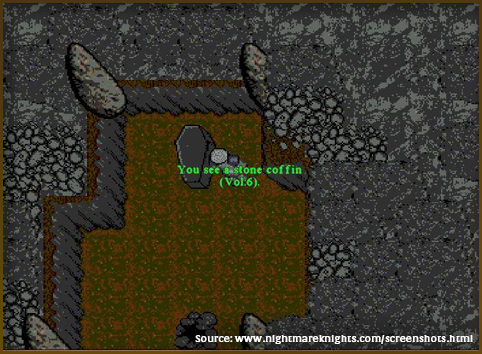
("Durin's coffin, one of the old relics of a long dead era."–Tibiantis re-introduced it as an ending location of a very long quest.)The original game is rife with allusions and humorous references, some funnier than others. You've all probably heard that the names of NPC vendors on Rookgard sound like the names of popular German stores. The NPC Rata'Mari, the spy in Mal'ouquah, is a clear reference to Mata Hari, while the storage full of books located in the Amazon Camp underground is an allusion to amazon.com, which started off as an online bookstore. Similiar examples are numerous. In the same vein, Tibiantis holds many references to the real world, history, pop culture, and even… Tibiantis' own community. For instance, a medieval traveller and explorer Muhammad Ibn Battuta was a historic inspiration for the character of Battuta, son of Kazzan. Cox, on the other hand, a TBI agent, is clearly a tribute to agent Fox Mulder from the X-Files (the TBI, originally, was obviously meant to be a reference to the FBI). Custom books and NPC dialogues are also full of similar allusions and references–ones that are completely new, and ones that have always been there originally but were built upon to add another flavor. For instance, since the dwarven prison Dwacatra is a dwarven counterpart of Alcatraz, one of our new quests features a thread that references the widely known Alcatraz escape. Not always, though, are the allusions so explicit. A great part of the questline that includes this thread was inspired by the Heart of the Darkness, even though there is no explicit reference. We'd like to mention here as well that the allusions to the real world are only one of many qualities of the original lore's climate that we're trying to recreate in the custom content. However, knowledge and understanding of these allusions is never required, e.g. to solve a quest. Knowledge of the lore itself should always be sufficient.
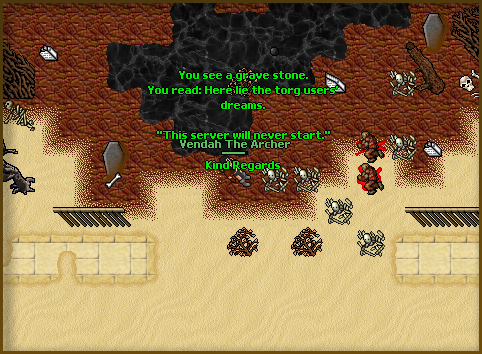
(One of the humorous references to the game community.)How, in practice, is the lore expanded then? We realize that some players would rather ask
why instead of
how. We know that not everyone is going to research the lore, but we believe that the unique climate of the old game was largely due to the rich elaborate lore. The fact that every location has its own backstory captivates the imagination and is much more appealing than thinking that a location is just a mapper's fancy. We also believe that attention to detail is a measure of commitment and quality. Tibiantis has made a name for itself by being the first OTS that recreated the original mechanincs and map with such great detail and by being so adamant about exposing and punishing all cheaters, even the ones who simply caught a few fish using a macro. These are still our principles, which is why we cannot do any less when creating new content updates. We cannot bear nor afford to add just anything to the game willy-nilly, no! We've explained where we get our ideas, but please know that each idea challenges us to find just the right way to connect it to the original lore, so that they make up one uniform whole. Of course, the original lore did not speak of Aruthang per se, but as we already mentioned on a number of occasions, if you look closely at the Aruthang content, you'll find numerous references to the existing plots.
Regardless of whether we are inventing a new thread or continuing an existing one, injecting the new content into the original lore is a delicate, difficult, and complex process. First of all, it requires us to know the original lore inside out. This means that we have to not only read (often multiple times) all the books, dialogues, and other sources in the game, but also be able to organize them and interpret them correctly. Many things or pieces of information are only implied and it is up to us to make the connections. There's also a lot of difficulty in the fact that the sources often vary in detail or even contradict one another. This is probably because in the real world they were written in different times or by different authors. We cannot use that as an excuse, though. We always attempt to explain or justify any such inconsistency, even if the "explanation" itself will not make it into the game. Any and every expansion to the lore must fully make sense to us before it can be injected into the game, which is why we created a special timeline for our own reference. This timeline includes every more or less important event from the game lore and it helps us place the new custom events in time so that they don't coincide with the original events or disrupt the chronology but rather blend together smoothly into one cohesive history. We also do our best to make the new content as rife with subplots and backstories as the original lore.
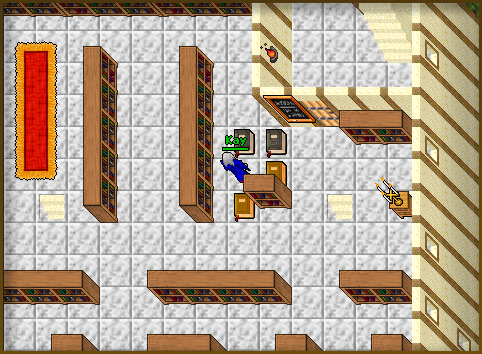
(Libraries are always treasuries of knowledge, and the White Raven Monastery's is one of the richest.)The New ContentLet us now move on to what most players anxiously await, i.e. the new content. It's not without reason that we started off with the lore, for that is the order of business when creating a new update. As we see it, it is the lore as a background story that determines the landscape and the characteristics of the new map, not the other way round. For each location, even though it may seem like a perfectly ordinary hunting spot, there is a plot justification of its existence or a story associated with it. Of course, much work on various aspects of the update is done in parallel–there are always fixes or changes–but it's the idea for new lore that is the starting point for the map and the rest of the content.
Before we can even begin to start working on the map, we need to have a clear idea of what new mobs we're going to include. At this stage, it's not really about finalized mobs, but we need the concept thereof clearly defined, along with their strength and abilities, so that we can plan the map accordingly. We do our best to make every update introduce a number of new mobs (5-6, give or take) that will be found in the new areas. It's also important that the new mobs include adequate hunting options for all level ranges. Most ideas for mobs come early, so during the planning phase we already have a range of concepts from which we can select a few that we think are the best. Having made that choice, we also need to decide on their appearance in good time so that we can commission our graphic designer to create the sprites. From this point on, the work on the mobs and the map can continue simultaneously.
At a later stage, when the new mob has been introduced into the game, we set their abilities, loot, etc. Then, they undergo extensive and arduous tests, during which we often modify these values. (You can read more about that later in this article.) New mobs are not supplemented with any new mechanics that were not available in the original game. Though we do try to use the existing mechanics with creativity to avoid repeating the same patterns of grinding and to make each mob interesting and, in a way, unique. This, of course, refers mostly to the stronger mobs, for with those we have some more room for maneuver in this regard. The best example here is the newly discovered obliterator. Hunting them requires completely different tactics than hunting any other mob. Additionally, it calls for cooperation between at least a few people. And creating a mob like this, and then balance it properly, is quite demanding.
The original game was clearly lacking in hunting spots that would engage the entire team. Obviously, any low- or mid-levels can gather together and go slay a dragon or a behemoth. But experience-wise this would not be very profitable, because in the same amount of time each team member could get much more exp grinding on some other weaker mobs. A dragon, therefore, would have to provide much more experience to be worth team-hunting. But then again, any high-level character can easily slay dragons on their own. So if the dragon were to grant more exp, this would result in a significant imbalance on higher levels. This whole issue arises from the fact that in the old game the character's power increases linearly, so every original mob can be hunted by a team or solo, depending on the characters' levels. Therefore, it's almost impossible to maintain balance in both scenarios. This is why team hunts are usually only carried out at the beginning, when the loot from some mobs is quite expensive, when a team member needs better equipment, or eventually for the sheer joy of companionship. When introducing new mobs, we're always on the lookout to change things up a little bit whithout altering the original mechanics or the gameplay.
Deciding on the loot for the new mob is also never random. We pay great attention to the game's economic system, trying to keep it sound and stable for as long as possible, which is why the choice of loot is usually preceded by the game's market analysis. We try to avoid adding items that are already in high supply so as not to reduce their value even further and impede their sales. As far as possible, we choose items that are in high demand or low supply and, of course, complement the mob thematically. Furthermore, we have to consider certain dependencies–for instance, that increasing the supply of a specific item will not only affect the value of the said item but also of other similar items. Of course, the economy will always deteriorate in time if there are no far-reaching changes to the game mechanics (which are undesirable after all). This results from the simple fact that as the players progress (which is obviously unavoidable on a long-term server), they loot more and more items, the demand for which will continue to fall. We've witnessed that in the original game, and we don't delude ourselves that Tibiantis is free from this process. Because of this issue, the original authors decided at some point to add NPCs who would buy up the surplus of such items, thus freezing their value. But in the long run this may mean killing the trade between players, consequently reducing player interactions, and increasing the amount of gold in the game (because NPCs, unlike players, get their money "out of thin air"), which in turn leads to inflation. This cannot be fully avoided, but the process can be slowed down and its effects mitigated to a certain extent. This is why on Tibiantis e.g. there's a limit per character on selling certain items to NPCs, and some quest rewards have been changed before launch. Additionally, some of the new quests include missions that involve delivering a certain item to an NPC. This helps stimulate the demand for those items (and their outflow from the server). The same also applies to items that had no real purpose originally but their being a quest item on Tibiantis caused the mob's loot to become quite valuable (e.g. red robe). Thanks to many similar measures, we managed to maintain a relatively healthy ecconomy, as evidenced by the fact that the in-game market price of a piggy bank is still affordable even after five years (and some other items too maintain their value, e.g. a dragon lance). We realize that there are still some issues with certain items, which is why with every update we revisit the discussion on potential solutions.
Returning to the topic of sprites, new ones are not always required, e.g. all custom mobs from Ankrahmun are based on the original sprites. The tar and the obliterator are recolored versions of the slime and the demon (respectively), the overseer and the sandlord are human-like, the desert hunter we already mentioned, and the phantom is invisible. We always add new sprites carefully and after due deliberation, because we want the game to retain its original look. Similarly, we are prudent and sparing about adding map objects, e.g. new types of terrain on Aruthang, which represent various geological layers, are also based on the original sprites. However, if using the originals is not possible, we do our best to make the new sprites match the original style and vibes. But this turns out to be another difficulty, because that original style isn't really homogeneous. The original sprites were created at different times–some come from the ancient versions, when the original authors drew from the game Ultima, and others were freshly added in 7.4. Hence, we often heard the opinion that the custom Aruthang mobs look "too good" relative to the original sprites. And if compared to the ancient mobs, like for instance the troll, then this might indeed be the conclusion. However, if juxtaposed with the 7.4 mobs (or not much older), like yeti or marid–in our humble opinion–the styles match.
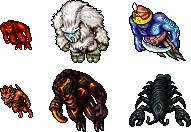
(The original sprites above side by side with the custom ones below.)Having discussed the map-related elements, let us return to the map planning process itself. Once we have the main concept, we make an approximated outline of the new location and then we mark the sectors it will overlay–thus, the initial draft is ready. When creating a map, we also want it to match the style of the original as much as possible. The original map has always been quite simple, if not minimalist, but also not devoid of certain tidbits and never giving the impression of being bare or empty, and this is our aim too. We pay special attention to hunting spots, of course. When desinging them, we always try to picture how the players are going to hunt, and we make adjustments accordingly. Sometimes to make hunting easier, other times to make it harder, depending on the overall balance. This includes not only the design of the location itself but also its general approachability, access and escape routes, etc. Custom hunting grounds can never be overtweaked, because they are meant to be but an alternative to the existing spots and not a competition. But they cannot be nerfed either, for they won't catch anyone's interest. Some high-level players express their disappointment in the fact that we refrain from adding spots that would allow them to gain experience faster on their levels, thus indicating the shallowness of the end-game content. However, we feel that this would not benefit the gameplay as a whole. In the long run, this would only result in their gaining even higher levels and thus… requiring even better hunting spots. This is the road that the original authors took–introducing more and more spots that gave more and more exp–which, in turn, only added to the problems with the gameplay balance, simply because the gameplay had not been designed for levels that high. On a long-term server it is naturally inevitable that players will eventually reach high levels, but there's no need to expedite this process nor aggravate its effects. We prefer to diversify the gameplay by introducing various challenges (e.g. epic quests), while maintaining the status quo of the original core regarding grinding with only an occasional alternative and a splash of variegation.
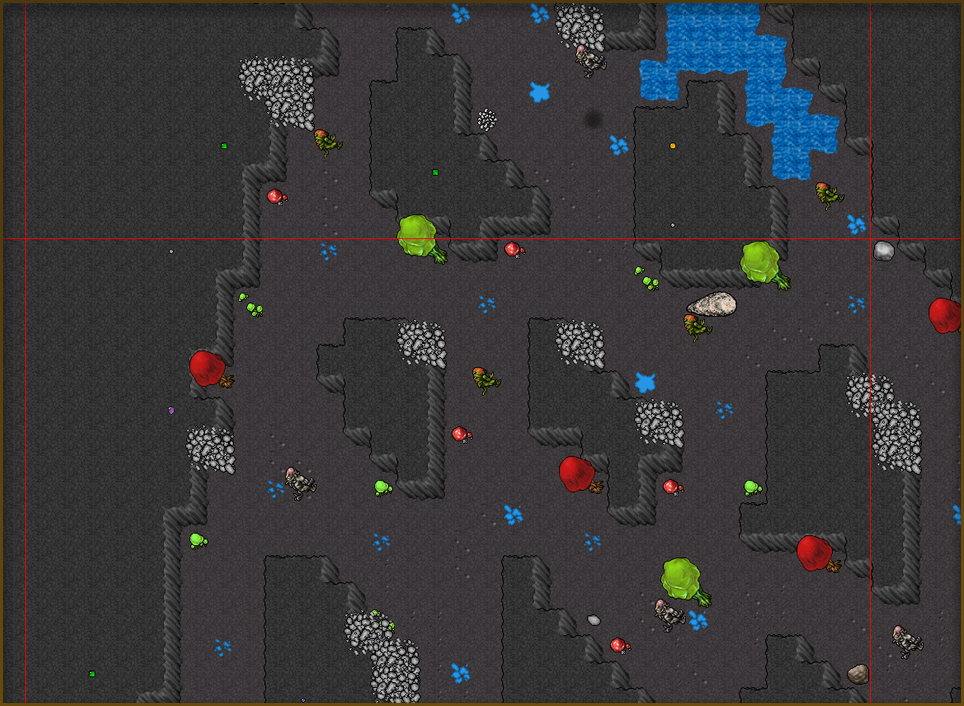
(The troglodyte cavern under Aruthang as seen in the map editor, where the red lines are the map sector boundaries. The discovery of this cavern meant that the well in Little Kazo had to be closed.)We already mentioned the importance we place on the background story when creating new locations. The same is true also for creating new NPCs. We always start by making up an outline of their life history and their personality traits, so that we can later use those to enrich the dialogues with some personal touches and flavors specific to this particular person. The biography doesn't necessary have to be fully injected into the game, but it is vital to writing the dialogues because it helps us get in their shoes. The NPCs' replies are always meant to reflect their own viewpoints and opinions (not ours!). And it's the same with books and other written sources, because each one has its own in-game author with their own personality, beliefs, and views. We are emphasising this here because we've been seeing in the discussions that players often misinterpret sources by trying to figure out what we (the real-world authors) meant to convey instead of who the in-game author might have been, to whom they were writing, when, and what they were trying to tell. If, for example, two books contradict one another, it might be an important piece of in-game information–the books might have had different authors, be addressed to different groups of readers, and/or be written at different times (rather than it all being our error). After all, we can assume that e.g. the history of Ankrahmun as told by humans or djinn would be quite different, don't you think?
Let us get back to NPCs though. New NPCs, just like the original, have certain sets of keywords, often including certain conditions, and specific replies assinged to each keyword. These keywords can be categorized into four groups. The first category is the most basic and it includes keywords like
job,
time,
name,
news, etc. and, of course, a greeting and a farewell. These are the keywords that almost every original NPC has and, obviously, so should ours. The second group of keywords are those pertaining to trade–if the particular NPC offers it. This group seems rather self-explanatory, so allow us not to elaborate too much on that. We will, however, note that a lot of thorough verification is required here, because one pricing error might have catastrophic results. Another category consists of all keywords that are purely plot-related. Most often they are replies regarding the location where this particular NPC resides, but also their relationships with other NPCs, their attitude towards the world, politics, and so on. Finally, the last category are the quest keywords. And these are tricky, for we have to carefully check that all the conditions are entered correctly (e.g. the required quest value). These categories are of course superficial, because in real scenarios all those categories of keywords often overlap.

(Example set of basic NPC keywords.)When the dialogues are done, they are submitted for professional translation. At first, i.e. before the server was first launched and also before the first update, we used to translate the texts on our own. However, the players have been pointing out the flaws and errors in the translation, which is why we decided to change that. In our defense, though, we can say that the original texts (dialogues, books, etc.) are also full of grammatical errors, typos, and other mistakes. An analysis of the whole original lore would surely expose hundreds of such errors. Nonetheless, we decided that it's not something that we want to transfer to the new content. We care that the in-game written content is as close to the original in style as possible but without errors. Thus, since mid-2022, all the custom texts in the game, as well as the news and articles on the website, are translated by a language professional. Of course, our language expert had to familiarize themselves with the language and style of the original content. Nevertheless, we still actively participate in the process by proofreading and requesting corrections until we're satisfied with the final result. Once the dialogues have been translated and approved, we need to apply certain adjustments to get the right flow of the conversation. The point is that most replies from an NPC should lead to other keywords. In other cases, the keyword must be implied in some other way, e.g. the questline, the plot, etc. If the NPC does not say the word explicitly and it is important that the player use it, popular synonyms are often included.
It rarely happens that an NPC will reply to a completely random keyword. This is why it's always a good idea to think hard on what to ask rather than brute-force the information from an NPC with a thousand prompts. We totally get it that sometimes desperation calls for even the craziest of ideas. You have to remember, though, that an NPC might react differently (or not at all) to the same keyword depending on whether we had met certain conditions (our character will have a quest value assigned), or e.g. if we have a specific item on us. Additionally, some replies can only be triggered as follow-ups to a specific utterance, i.e. when we had mentioned a specific topic first. On occasion, it might be required to use more than one specific keyword, thus it might sometimes be a good idea to try speaking in full sentences. These types of mechanics might also cause any attempts to brute-force NPCs to fail. However, we try not to overcomplicate these mechanics but rather to match, more or less, the original NPCs' level of development and complexity. We also try to match them in the number of side stories. Of course, no two NPCs are the same–they can be e.g. chatty or withdrawn. There are those who don't share much and those whom we like to call
lore NPCs because of the multitude of dialogues and the abundance of plot-related information that they can share. One example of such a lore NPC is Edowir whose original file was the second largest (after H.L.), even though he was not directly connected to any quest nor did he offer trade. You can find other NPCs amongst the new ones similar to Edowir in terms of pure text amount.
We have to mention at this point that update introduces not only new NPCs but also new dialogues for the existing ones. We've described how we first invent a biography and personality for a new NPC, so that they're consistent in their demeanour and manner of expression. Thus, adding dialogues to existing NPCs is quite a challenge, for we have to get to know them first, and they aren't always so keen on sharing their life stories. And once again, a detailed knowledge of the original lore comes in very handy here. After all, we cannot just ignore this step. Wouldn't that be weird if no NPC on the mainland knew anything at all about e.g. a new island? Besides, we also stated repeatedly that the lore must be uniform, which is why new dialogues, that also reflect the specific NPCs way of speaking, are necessary. Also because it might be related to new more or less hidden quests. However, not all stories lead to some big quest. But knowing them helps you understand the background story and the in-game events, both of which will definitely be helpful in your future explorations.
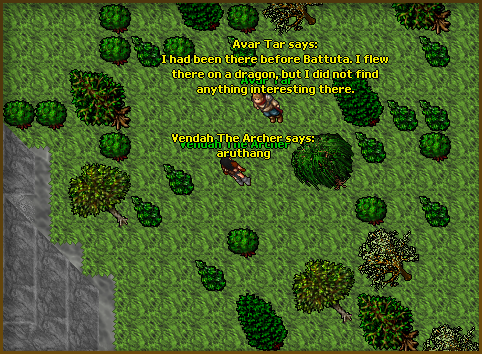
(NPC Avar Tar would never pass up on an opportunity to brag just about anything.)To conclude, the new content is not only comprised of the mobs, map, and NPCs. It also includes many other features, such as new houses or custom monster raids, which all require additional work and thorough verification, and which we won't mention here and describe in detail, to keep the article concise and to the point.
Epic QuestsOne of the more outstanding parts of custom content are so-called epic quests. They are long, difficult, often well hidden, and simply quite
legendary. They are the type of quests that we were missing in the original game. Back in the day, the players who liked to delve into the lore and explore the local mythology did not know it was just that–mythology with no solution, no ending, no reward. Since the introduction of the quest system (in version 7.2), every quest was quickly spoiled, often during the test server, and the game itself didn't really offer anything new to discover. The only exception here was the quasi-quest, i.e. knowing how to exchange a life crystal for a life ring with Chester (this came to light only as a result of a game files leak). This means that all the players' efforts were to no avail. Of course, quests aren't all about the reward, but also the fun in getting to know the world in the game, exploring the lore, finding new interesting stories, etc. Sometimes the journey itself is the destination, true. But the fact that there's absolutely nothing at the end of the road will always be a disheartening disappointment. And with that weighing on their hearts, the players have got nothing left but to embrace the despair of numbers and the hard toil of levelling up. That is why in Tibiantis we think it's important to always have something to discover, and that is also what epic quests are for.
The epic quests are by definition much more difficult than regular quests. However, this difficulty should result from requiring extensive knowledge of the lore and the length and complexity of the quest rather than from e.g. having to kill a number of very strong monsters. This is why most epic quests can be completed even by a relatively low-level character. As for the complexity, the solution must of course be fully logical. In no case will it ever be a mechanism like "stand on two randomly pre-seleceted squares in Thais to open a portal somewhere on Edron". Such a solution would make no sense whatsoever. In the same vein, we would never expect the players to blindly dig through every square on the map. A quest requires a logical quest line, and each step should follow some clues. If anything needs to be dug up in an absolutely incospicuous location, then surely it will be hinted so at some point. Moving on to the difficulty of epic quests, it is often increased by the fact that the clues required to complete them are often hidden in the original unchanged sources (e.g. books, dialogues). Most players disregard those, assuming that they must search only in the new or updated sources. Nonetheless, the most important factor that makes epic quests so special is the reward. Usually, for the very first player to finish the quest, there is a truly epic reward awaiting–most often a legendary item. Additionally, there's always a minor reward for all the subsequent adventurers who complete the quest. Thanks to this, having been completed once, an epic quest does not become yet another dead end but a regular quest in a way.
Finding the right balance for an epic quest's difficulty level is great challenge–it cannot be too easy because of the reward, and it also cannot be too hard to be completed. The desired level of difficulty is when the quest is too tough for most players, but possible to complete for the few most tenacious adventurers–preferably after a certain not too short period of time (not right away but rather after e.g. a few months or even a year after its release). However, it is virtually impossible to predict this with such accuracy. Up until now, one epic quest has been completed, and the player Jegaar has acquired an exceptional great axe (leaving dwarven armors for all the subsequent explorers). This fact demonstrates that, even though they're tough and well-hidden, epic quests really do exist and are completable.
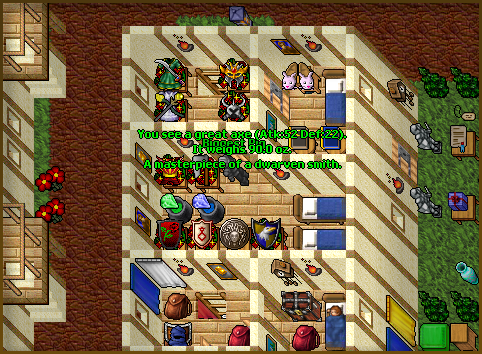
(The legendary axe wielded by player Biggest Pig, who was the first to traverse a major part of the quest, even though in the end it was his guild mate who finally completed the quest. A large collection of other rare items in the background.)A new epic quest introduced in an update is not always focused on that particular update and its content. It might but it also might absolutely not–there's no rule to that, and so it's worth looking for… everywhere. Of course, epic quests are often (fully or partially) related to the in-game myths and mysteries of old times, which, in a way, resurrects those myths and stories and gives them a second life. We'd love to write more about this, but we do not wish to spoil anything for you. :) Epic quests are called
epic for a reason. Any additional hints or clues from us would contradict the whole purpose of epic quests. This is also the reason why we do not announce introducing such a quest, let alone pointing the players to its "beginning". We can only reiterate here that each update brings in at least one such quest and also that an epic challenge makes for an epic reward. ;)
TestingThe last stage of creating any content update are, of course, tests. It's the last one only logically and by convention, though, because in reality different stages often proceed concurrently. Back in the day, updates were always preceded by an open test server, during which players would find and report bugs, and this in turn allowed the developers to fix them before the official launch. Also, many changes to the game balance would be made at that time based on player feedback. This way, most issues could be recognized and solved thanks to a great number of testers. However, we feel like open tests took all the fun out of the exploration of new content, because most secrets (if not all of them) had already been discovered before they even officially made it into the game. It's true that because of technical limitations, only a small percentage of players was given an opportunity to test the new content, while others could access it only after the official launch (unlike it would be on Tibiantis), but that didn't help much because news travel fast, especially on forums, fansites, and the like. Let's take Pits of Inferno for instance. According to the lore, it is supposed to be the location of an absolutely legendary quest and the utmost challenge. In reality, though, it was completely spoiled during the test server and the only difficulty that remained even for the first teams was the monsters and the time required to finish the quest in one run. We strongly believe that it's better for the players to leap blindly into the new content (with no prior knowledge of what to expect), to explore everything on their own, taking the full risk (unlike on a test server). Especially that Tibiantis also holds so-called epic quests, that we mentioned before. Taking advantage of players and having them test the new content defeats the purpose of our updates altogether, which is why we decided against open tests before content updates (including those accessible only for selected players, because everyone deserves an equal chance).
(It is worth clarifying here, though, that we allow for the possibility of opening a test server in order to test technical issues, e.g. client and backend changes. We had one such test server in the past. For the players, the server offered nothing new, except for a chance to fool around and enjoy some meaningless slaying. For us, on the other hand, it was very important in terms of testing the new database and other backend changes. We might open other test servers under similar conditions in the future, but they will never include the new content.)
Since we don't host open tests of the new content, we have to take the full responsibility for the whole update. This means that the testing phase is laborious, because we have to verify every nuance personally and make sure that everything works as expected. Something that was usually performed by hundreds, if not thousands, of players, we–all 3 of us–have to do on our own. And test aren't limited to simply checking whether something works or not. We must find and fix all the bugs, no matter how small or infrequent, and make sure that every monster, hunting spot, or item is well-balanced. You can imagine how much effort is needed to do all this thoroughly. This is also a huge responsibility and pressure, because potential bugs might not only ruin the reception of the whole update but also bring about disastrous consequences for the whole game, which we simply cannot allow. And while searching for bugs can take much time and effort, balancing a new hunting spot is a real challenge, for it requires many hours of hunting with various characters of different levels and professions. The testing phase, therefore, involves many complex analyses regarding XP/h, loot drop, etc. And every time the tests result in a change, we have to start over on the whole process. Oftentimes, we also have to test existing hunting grounds in the meantime to acquire data for an accurate comparison. The new content, after all, is supposed to be well-balanced against the original content as well. We can only surmise which level we'd already be, if we spent this much time on an actual game server. :)
The fact that we have to somehow manage on our own has also certain other limitations that hardly anyone recognizes. For example, what if we're designing a new boss or hunting grounds that require a bigger team? Before the Ankrahmun rework, we found ourselves in the need of another character to test a monster–the obliterator, and so we had to… create a bot. Yes, you read that right. We needed another shooter to complete our team, so–for testing purposes–we had to create a bot that would simulate one. And creating that bot was additional time-consuming work, but it was necessary to ensure the right balance.
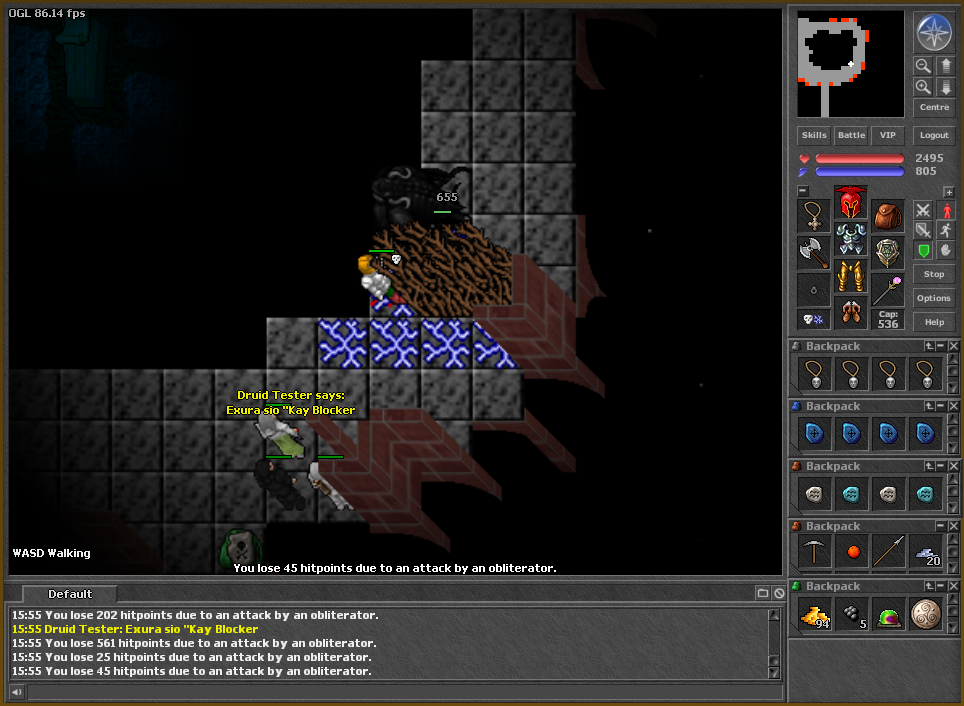
(Here's our brave team: three gods and a humble bot, whose first version was so realistic that he occasionally happened to shoot the blocker…)To sum up, testing is the one phase that is probably the most satisfying, because it allows us to experience all the great fruits of our labor. At the same time though, it's the one that is also the most wearing, demanding, and responsible. We understand the impatience of the players who await the update anxiously, but all in all, it's the quality that matters the most–not an early release date. And the quality depends much on thorough tests and verification. Despite our best efforts, it may happen, of course, that we miss certain bugs or details that will require a fix, for we are but human, and we make mistakes. What we cannot allow, however, is to consciously publish a product that is erroneous, flawed, or incomplete. An update full of bugs will not bring joy to anyone, even if it's released sooner. Moreover, we must all rememember that each update is like a surgery on a living organism. We're not discussing a new product that in the worst-case scenario would become a quickly forgotten disappointment. We're talking about changes that will affect the whole existing gameplay. Ill-considered and untested changes can break the game completely, which is why good administration, just like a good doctor, should be guided by the golden rule–"first, do no harm". :)
The Other Side of the UpdateWorking on an update is not just the work on the content. We already mentioned the bot that we had to create to help us test the new mob. But there's a number of other tools that we use and that are in fact essential. The most significant one is, obviously, the map editor. Fortunately, we did not have to write it from scratch, since there are publicly available sources, but we had to put some work into adapting the editor to our needs: enable handling a completely different map format, fix numerous bugs, and finally add a number of completely new features that were absolutely indispensable but not present in the open-source version of the editor. We also had to create our own custom set of tools for editing game files. And to refine each mob and achieve the right balance we wrote a number of scripts that calculate statistics and generate damage distribution diagrams with regard to skill, equipment, etc.

(The distribution of Orshabaal's damage against the test character.)Another important aspect here that also requires some work is the client. It is seemingly no different from the original, which we've used from the very beginning. However, the truth is that with each update we release fixes and minor features to the clientas well. And in this case, any change (even the tiniest) requires much more work than one might expect, and the reason for this is very simple–there are no sources for the client. An update is also a good opportunity to introduce some more extensive changes to the backend, i.e. to what happens behind the scenes. We keep making further improvements here, and the upcoming update ("The Depths of the Abyss", in case you're reading this after the release) will be no different and introduce new features, that the players have been requesting for some time now, and certain changes to the backend (mostly indiscernible for players, though there might be exceptions). All those features, fixes, and other side projects that are not directly related to adding new hunting grounds or quests are also an important part of all our work on updates, and they too require time and effort.
SummaryOnly once we've gone through all the abovementioned stages can we finally release a new update for you to enjoy. We truly hope that this article will help you appreciate the scale of the challenge that we have to face. Let that scale be demonstrated by the length of this article, which is still pretty general. The topic, though, is so extensive that if we wanted to dig into all the nuances the article would turn out to be whole book. The extense and the level of detail that must be taken into account are the reason it's so hard to plan ahead and schedule the specific stages and the release. It's important to keep in mind that updates are not the only thing that we work on on a daily basis. They are important, obviously, but not the most important. We explained before that we cannot let reckless changes or a rushed update ruin the gameplay. But we also cannot allow our focus on an upcoming update to negatively impact the present gameplay. Time is limited, and if we spend it on X, we'll have less to spend on Y–that's just the way it is.
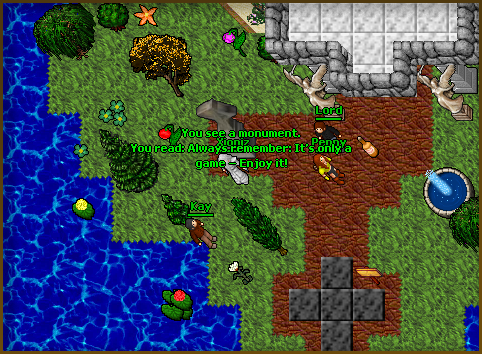
(The motto left for us all by the original authors. Always relevant.)We sometimes hear reproaches that another OTS releases updates as often as e.g. once every three months, instead of every year or two. Or that the original authors used to update every six months. We have no doubt it's true that other developers manage to release updates more often. However, when making such comparisons, it's only fair to ask whether they too place the same importance on detail and the right balance? Do they do the same amount of work, e.g. regarding eliminating cheaters, as we? Additionally, we feel that comparing us to the original authors is truly unfair, for they are a big company, who used to have a dedicated team of content developers whose sole task was to work on content updates. Moreover, their updates were not always considered well-prepared or balanced, which in turn led to breaking the whole game, did it not? Thus, we have to aim higher and do better, even though we have incomparably less manpower and resources. We also need to remember that Tibiantis is a server that was basically founded on nostalgia, and that nostalgia might quickly dispel if we were to put the quantity of updates over their quality. The new content is meant to be only an expansion purposed to break the monotony and introduce new challenges but not to change the whole game. That is why we are so confident that it is better to have less frequent but thought through, well-balanced, and polished content updates. They are obviously not perfect, but we definitely learn a lot in the process and use the gained experience to keep improving. We get that the anticipation might be frustrating to some of you, yet we believe that in the long run high quality will always prove its worth. :)